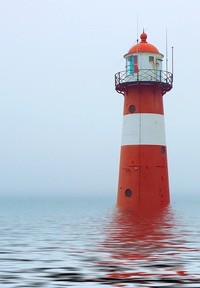Baden-Württemberg Forest Wood Chain
The Baden-Württemberg case study is region-defined and aims to describe the network of forestry-wood chains in Baden-Württemberg including imports into the region and exports out of the region - as opposed to the case studies for Iberia (consumption-defined) and Scandinavia (forest-defined). Region-defined means that only the forest resources, production processes and consumption that occur within the selected region are analysed.
The Baden-Württemberg case study represents the Central European forestry-wood chains which are characterised by a large variation of forest types based on a diverse silvicultural management, stands with mixtures of broadleaved and softwood species, and a wide range of stand ages. The challenge of this highly diversified forest production results in a highly diversified wood-based industry with a heterogeneous structure in mill size and degree of specialisation in production as well as in a multitude of linkages between the different industries.
Baden-Württemberg as industrial base is characterised both by highly advanced technology industries of international importance like automobile or chemical industries, and on the other hand strongly influenced by the locally important rural based agricultural and forestry sector. Forestry and wood-based industry contribute about 7% to Baden-Württemberg's GDP (in comparison to 2% for the whole of Germany).
The wood-based industry present in Baden-Württemberg is also characterised by the contrast between private-owned small and medium sized companies producing for the local and regional markets on one hand, and large consortia operating internationally on the other hand. The borders to France and Switzerland additionally introduce the challenge of international material flows across borders to the case study.
The large share of the forestry and wood-based industry sector to the economic strength of Baden-Württemberg, and the representation of the forestry and wood-based industry in its high diversification makes the region Baden-Württemberg a typical example of the Central- European area. The Baden-Württemberg case study in its details will represent the forestry-wood chains in Germany, Austria, Benelux, Poland, Czechia, Slovakia, Slovenia, Hungary, Romania, parts of France, the north of Italy and Switzerland.
For this case study only the tree species Norway spruce (Picea abies (L.) Karst.) and European beech (Fagus sylvatica L.) are considered as these two species account for more than two-thirds of wood volume produced and processed in Baden-Württemberg. The main wood industry sectors sawmilling, pulp and paper production, panel production, and bio-energy and successional industries are present in Baden-Württemberg, are therefore taken into account and included in the case study.
As there are no official statistics for consumption of wooden goods and wood-based products specifically for Baden-Württemberg, the following approach was taken to estimate the consumption of goods from statistical data for Germany as a whole broken down per capita for Baden-Württemberg. There will be material import and export into and out of Baden-Württemberg for roundwood, semi-finished products and end-products. Imports and exports from the other 16 federal states in Germany cannot be quantified, and European and overseas imports and exports can only be quantified on an overall German basis. To overcome this problem, volumes of material in exports and imports in each category are handled as net balance.
The volume of material is derived from known volumes produced in Baden-Württemberg and known volumes consumed. From that difference either a net import or a net export of wood volume in this category is assumed without differentiation of where the material comes from or goes to unless this is known by expert knowledge. Altogether 60-80% of the natural production in the forests, of primary and secondary processing in the wood industry, i.e. wooden products, paper and boards, panels and bio-energy and of the consumption of the produced goods are described. Consumption of the goods ends either as recycling into the material flow or as incineration of feed-back, although by federal law deposition of organic material in landfills has not been allowed since 1 June, 2005.
Scenario
The bio-energy scenario is implemented as a case study in Baden-Würtemberg; the case study takes into account increased production of bio-energy from dendro-biomass and increased use of bio-fuel in machine operation and transport. In the scenario under the A1 reference future the produced volume will not change, but part of the harvested volume of small round wood will be reallocated to bio-energy, mainly increasing the competition for raw material with pulp and paper industries. Additionally harvest residues will be utilised for bio-energy production and crop land is converted to short rotation plantations that will be used for bio-energy production. In the scenario under the B2 reference future silvicultural management increases up to 50% until 2050 and especially in the small-dimensioned assortments cutting will increase by 20%. By 2025, 50% of the harvested wood will be designated for the bio-energy, while additionally harvest residues, stumps and small round wood are extracted, for which also difficult accessible areas are increasingly taken into management. Due to high energy costs and environmental awareness, the share of wood volume transported by trucks on public roads will be reduced to 60%, while rail and ship transport will increase to 20% each.

